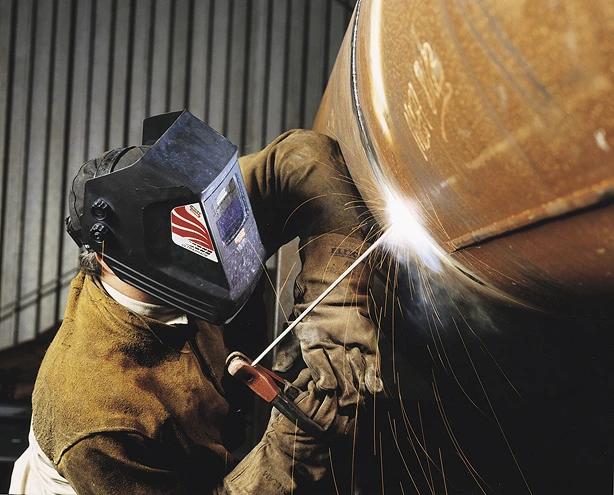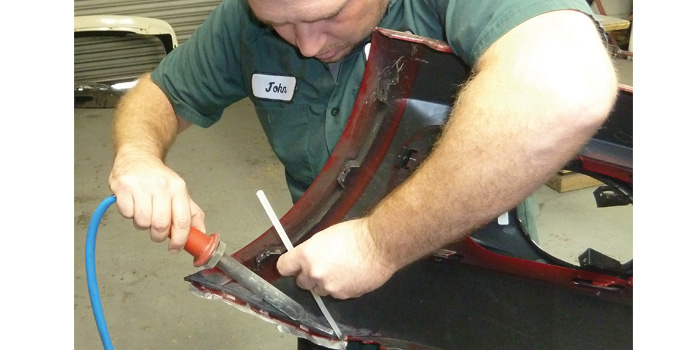Typical Welding Repair Service Issues and How to Address Them Efficiently
Welding repair services frequently encounter a variety of problems that can jeopardize the honesty of the last item. Common problems include insufficient penetration, porosity, and misalignment, to name a few. Each defect offers one-of-a-kind obstacles that need certain methods for resolution. Understanding these issues is important for welders intending to enhance their skills and results. This conversation will discover these common welding fixing issues and effective methods to resolve them.
Inadequate Infiltration
Insufficient penetration takes place when the weld metal stops working to totally fuse with the base product, causing weak joints and potential architectural failures. This concern commonly comes from inadequate warmth input, inaccurate electrode angle, or incorrect welding speed. Welders may run into insufficient infiltration as a result of a mistake of the required criteria for a details material thickness or type. In addition, contamination on the base material's surface area can impede reliable bonding, aggravating the problem. To resolve inadequate penetration, welders ought to ensure suitable settings on their devices and keep a tidy work surface area. Normal examination of welds is recommended to determine any deficiencies early, enabling timely corrections and the prevention of jeopardized architectural integrity in bonded assemblies.
Porosity
Porosity is a common issue in bonded joints that materializes as small gas bubbles entraped within the weld metal. This issue can endanger the stability of the weld, leading to minimized strength and potential failing under tension. Montana Mobile Welding and Repair Belgrade. Porosity typically emerges from contamination, wetness, or inappropriate welding techniques, which enable gases to run away into the liquified weld swimming pool. To resolve porosity, welders need to ensure proper surface prep work, maintain a clean workplace, and utilize suitable welding criteria. Additionally, selecting the appropriate filler material and protecting gas can mitigate gas entrapment. Normal evaluation and testing of welds can aid identify porosity early, assuring timely restorative actions are taken, therefore maintaining the quality and reliability of the bonded structure
Imbalance
Imbalance in welding can develop from various aspects, including incorrect configuration and thermal growth. Comprehending the origin is important for efficient resolution. Numerous improvement strategies are readily available to straighten elements and assure architectural stability.
Reasons for Misalignment
Welding misalignment typically stems from a variety of underlying concerns that can jeopardize architectural honesty. One key reason is incorrect fit-up of elements before welding, which can cause gaps and unequal surfaces. Variants in thermal growth throughout the welding procedure can also result in distortion, especially if the products being joined have different coefficients of expansion. In addition, insufficient fixturing and securing may fail to hold elements securely in position, leading to activity during welding. Improperly maintained devices, consisting of welding machines and tools, may present inconsistencies in the weld grain, further adding to misalignment. Driver error, stemming from not enough training or experience, can additionally play a considerable duty in developing misaligned welds.

Improvement Techniques Readily Available
Addressing imbalance successfully needs a combination of rehabilitative strategies customized to the details problems handy. One common method is making use of fixtures or jigs to hold elements in the correct setting during welding, guaranteeing constant alignment. Furthermore, preheating the products can assist lower distortion and improve fit-up. For significant imbalance, mechanical adjustment techniques, such as utilizing hydraulic jacks or clamps, can be utilized to fix the setting prior to welding. Post-weld heat therapy may additionally be necessary to ease tensions triggered by misalignment. Mindful assessment and change throughout the setup phase can stop misalignment concerns from coming to be significant problems, advertising a smoother welding procedure and enhancing total structural stability.
Distortion
Distortion is an usual difficulty in welding that can arise from numerous variables, including unequal cooling and heating. Recognizing the sources of distortion is crucial for carrying out efficient prevention methods. Addressing this problem not only enhances structural integrity but additionally boosts the overall quality of the weld.
Reasons for Distortion
When based on the intense warmth of welding, products frequently go through modifications that can result in distortion. This phenomenon primarily occurs from thermal growth and contraction during the welding procedure. As the weld area warms up, the material increases; upon air conditioning, it gets, which can develop inner stresses. In enhancement, unequal home heating throughout a work surface can exacerbate these stresses, resulting in warping or flexing. The kind of product also plays a considerable role; metals with varying thermal conductivity and coefficients of development might react in different ways, resulting in unpredictable distortions. Bad joint design and poor fixturing can add to misalignment throughout welding, boosting the possibility of distortion. Recognizing these reasons is crucial for effective welding fixing and prevention strategies.
Avoidance Techniques
Effective prevention strategies for distortion during welding focus on regulating heat input and guaranteeing appropriate joint design. Keeping a constant warm input assists to decrease thermal expansion and contraction, which can cause distortion. Utilizing strategies such as preheating the work surface can additionally decrease the temperature slope, advertising consistent heating. Furthermore, selecting ideal joint styles, such as T-joints or lap joints, can enhance stability and decrease anxiety concentrations. Applying proper fixturing to protect the work surfaces in area even more help in maintaining positioning during the welding process. Lastly, staggered welding sequences can distribute warm extra evenly, protecting against local distortion. By using these techniques, welders can significantly decrease the chance of distortion and improve the total quality of their welds.
Splitting
Cracking is a common problem encountered in welding fixings, usually arising from different aspects such as improper cooling rates, product choice, or poor joint prep work. The occurrence of splits can considerably endanger the stability of the weld, resulting in prospective failures during procedure. To resolve this problem, welders must initially examine the origin, ensuring that materials get more info are compatible and suitably selected for the particular application. In addition, regulating the air conditioning price throughout the welding process is important; rapid air conditioning can induce stress and anxiety and lead to fracturing. Proper joint style and preparation likewise add to minimizing the threat. Carrying out these strategies can improve weld top quality and longevity, eventually decreasing the likelihood of fracturing in ended up weldments.

Insufficient Combination
A considerable problem in welding fixings is incomplete combination, which occurs when the weld metal does not properly bond with the base product or previous weld passes - Montana Mobile Welding and Repair Fabrication. This flaw can cause weak points in the joint, potentially jeopardizing the integrity of the welded framework. Aspects adding to incomplete combination include insufficient heat input, incorrect welding technique, and contamination of the surface areas being signed up with. To address this issue successfully, welders ought to assure appropriate pre-weld cleansing and surface prep work, as well as change their welding criteria to accomplish ample infiltration and fusion. Routine examination throughout the welding process can additionally assist recognize insufficient fusion early, permitting prompt restorative steps to enhance the total quality of the weld
Overheating
While welding repairs can improve architectural stability, overheating offers a substantial difficulty that can bring about product deterioration. Too much warm throughout welding can modify the mechanical residential or commercial properties of steels, causing reduced strength, enhanced brittleness, and warping. This phenomenon is particularly essential in high-stress applications where structural reliability is vital. Identifying getting too hot can include aesthetic inspections for discoloration or distortion, along with keeping track of temperature during the welding process. To alleviate the dangers related to getting too hot, welders ought to employ suitable methods, such as regulating warm input, changing travel speed, and using ideal filler products. In addition, carrying out pre- and post-weld warmth therapies can assist recover material homes and boost the total top quality of the repair service, ensuring long-lasting performance and safety and security.
Frequently Asked Concerns
What Are the Typical Signs of a Welding Defect?

Just How Can I Examine My Welds for High quality?
To check welds for quality, one can make use of visual examinations, ultrasonic screening, and radiographic approaches. Each technique guarantees architectural integrity, recognizes flaws, and validates adherence to specified requirements, eventually boosting the reliability of the welded joints.
What Safety and security Precautions Should I Take While Welding?
When welding, one should focus on security by using ideal individual protective equipment, making certain proper air flow, protecting combustible products away, preserving a tidy work area, and understanding environments to stop accidents and injuries.
Can I Repair a Weld Without Renovating the Entire Joint?
Repairing a weld without remodeling the entire joint is feasible, depending on the damages (Montana Mobile Welding and Repair Belgrade Welding). Strategies such as grinding, adding filler material, or utilizing a welding procedure can efficiently attend to details problems while maintaining the surrounding structure
What Equipment Are Crucial for Reliable Welding Repair Works?
Essential tools for reliable welding repair work include a welding device, cable brush, grinder, protective gear, clamps, and filler materials. Each tool plays a vital function in ensuring top quality and safety and security during the repair process. Porosity typically arises from contamination, moisture, or improper welding techniques, which allow gases to leave right into the liquified weld pool. Inadequately maintained tools, consisting of welding machines and tools, may introduce inconsistencies in the weld bead, more contributing to misalignment. When subjected to the intense warm of welding, materials typically undertake changes that can lead to distortion. Cracking is an usual problem run into in welding repairs, often resulting from various variables such as incorrect air conditioning rates, product selection, or insufficient joint preparation. A considerable problem in welding repair services is insufficient fusion, which takes place when the weld steel does not effectively bond with the base material or previous weld passes.